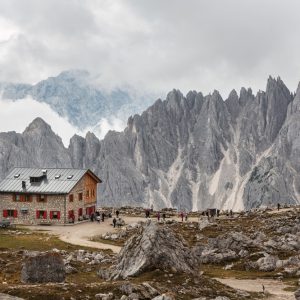
Nothing about Anglian Water’s pipe and sewer network is small. 114,000km long, this subterranean maze of drains, culverts and conduits is serviced by over 140 water treatment works and carries roughly 1bn litres of the thirst-quenching, pots-cleaning, toilet-flushing liquid daily to 4.3m customers across East Anglia. Ensuring leaks and contaminants are kept to a minimum has not been easy. Last year, Anglian missed seven out of 12 of its performance commitment levels in areas including supply interruptions, drinking water quality, sewer flooding and pollution incidents – failures that will see the Cambridge-headquartered firm pay back £38.1m to customers this year and next. Climate change and rising usage levels won’t make that task easier in the future, admits Anglian’s chief data officer, Matt Edwards. “These are all,” he says, “huge issues.”
In response, Anglian is investing £11bn in new network infrastructure to not only increase capacity and the ability of engineers to physically respond to leaks, but also in new technology designed to spot the latter and, in time, predict where they’re most likely to occur. Enter Hive, a new geographic information system built out of Esri’s ArcGIS software line. By pulling in data from across Anglian’s sizeable digital estate, the platform is providing the firm’s engineering team with a real-time map of existing and incipient problems across its pipe and sewer network – “like Google Maps,” says Edwards, “but more granular.”
Anglian Water’s ‘universal playbook’
Details flagged by Hive include data on area boundaries, river flows, storage tank levels or the location of network technicians. Additionally, explains Edwards, the platform can pull up the risk potential of certain assets, HR data, and even relevant contact information to speed up messaging customers when required.
That level of information, says Mike Wingell, the firm’s geospatial strategy manager, would be overwhelming if viewed all at once — or time-consuming to extract if it had to be retrieved from multiple systems. “[Hive] can present all of this in a way people understand,” he says. With users able to zoom in and out, different data switches on and off automatically, resulting in a consistently clean interface functionality. And sourcing dynamic data from multiple systems means Hive presents as up-to-date a picture as possible. “This will help make better decisions,” says Wingell, with different live analyses and triage capable of being run on the system.
“[That] allows us to prioritise work, such as if an incident has a risk of turning into a pollution event,” says Wingell. “Taking different geospatial datasets, when used together, creates much more positive outcomes and a better awareness of what’s going on.” The result, Wingell argues, is that Hive provides managers and leaders with a real-time survey of Anglian’s entire water network. “This can be work orders, geological makeup of an area, flood zones, customer contact points, maintenance plans,” he says. “It’s a universal playbook.”
From reactive to proactive
Crucially, Esri’s SAAS solution sits outside Anglian Water’s digital estate, affording more opportunities for the latter to share its data with third-party stakeholders such as local councils and telecoms partners and boost its adherence to an open data philosophy. Eventually, says Edwards, the water firm hopes to harness Hive to help it react to leaks and engineering issues proactively. That’s just as well, considering the current pressure on all UK water companies to clean up their act on asset management at a time when demand is increasing and leaks are more common than ever.
For its part, Anglian says it wishes to see serious pollutants reduced by 71% in five years, a goal that it intends to reach through the use of visualisation tools like Hive and better use of data from smart meters and other network sensors. Outside stakeholders are watching its performance closely – notably the government, which fined Anglian Water £1.42m for allowing flakes and powder to enter the drinking water supply (the firm apologised but refuted claims that its actions had led to any contamination), but also customers angered by rising bills and the looming threat of hosepipe bans. Edwards hopes that the firm’s investment in Hive and its wider sensor network will help meet the high expectations of both. “We’re not there yet,” he says, “but we’re on the journey.”






